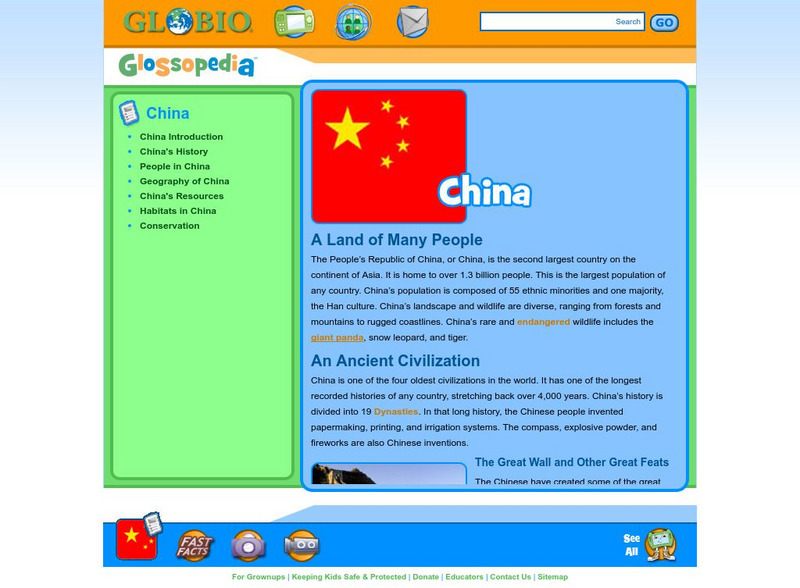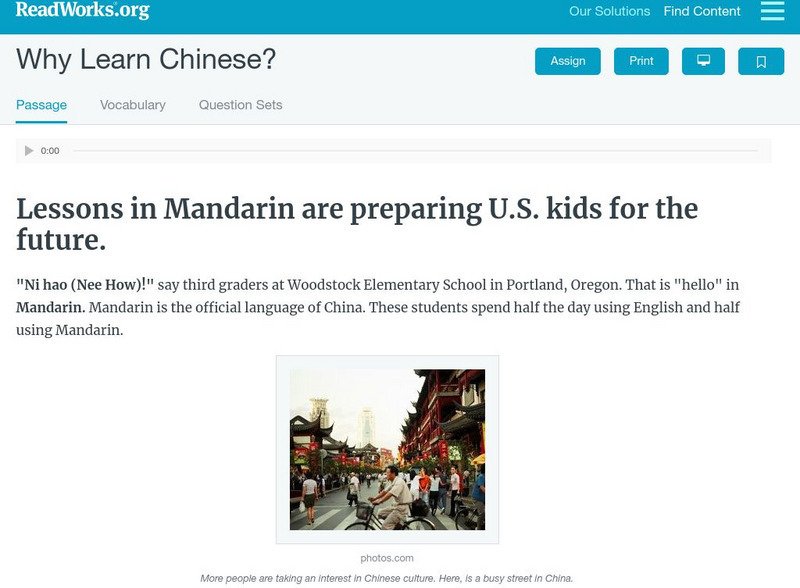Curated OER
Chinese Language
This handout provides a very simple introduction to the two primary Chinese languages, Mandarin and Cantonese. It also includes two Chinese symbols.
Curated OER
Chinese Language
In this Chinese language worksheet, students read about the two main languages, Cantonese and Mandarin. They see how the symbols represent words. There are no questions with this worksheet.
Globio
Glossopedia: China
China is the second largest country in Asia with the largest population in the world. This article discusses China's long history, many inventions, and basic cultural information. China's varied topography is introduced as well as...
PBS
Pbs Learning Media: Mandarin Movement Lesson Plan
In this activity, language and movement unite. There are two teachers who will read a command, once in Mandarin and once in English. The students listen to both languages and then perform what the command is.
BBC
Bbc: Real Chinese
A lively introduction to Mandarin Chinese in 10 short parts in the form of slideshow presentation with audio content. Useful phrases with tips on pronunciation and grammar, cultural notes, self-evaluated challenge for comprehension are...
Read Works
Read Works: Why Learn Chinese
[Free Registration/Login Required] Students read about why some third-graders are learning to speak Mandarin. A question sheet is available to help students build skills in drawing conclusions.
Read Works
Read Works: Learn Mandarin!
[Free Registration/Login Required] An informational text showing how to count to five in Mandarin. A question sheet is available to help students build skills in reading comprehension.
Language Guide
Language Guide: Mandarin Chinese Vocabulary
Useful resource for learning everyday Chinese vocabulary -- roll over each image to hear the correct pronunciation and see how the word is written. Corresponding English section (and other languages) makes this site a useful tool for ESL...
ClassFlow
Class Flow: National Geographic Survey
[Free Registration/Login Required] How much do you know about the world around us? Questions provided by National Geographic Survey. http://www.nationalgeographic.com/roper2006/findings.html










